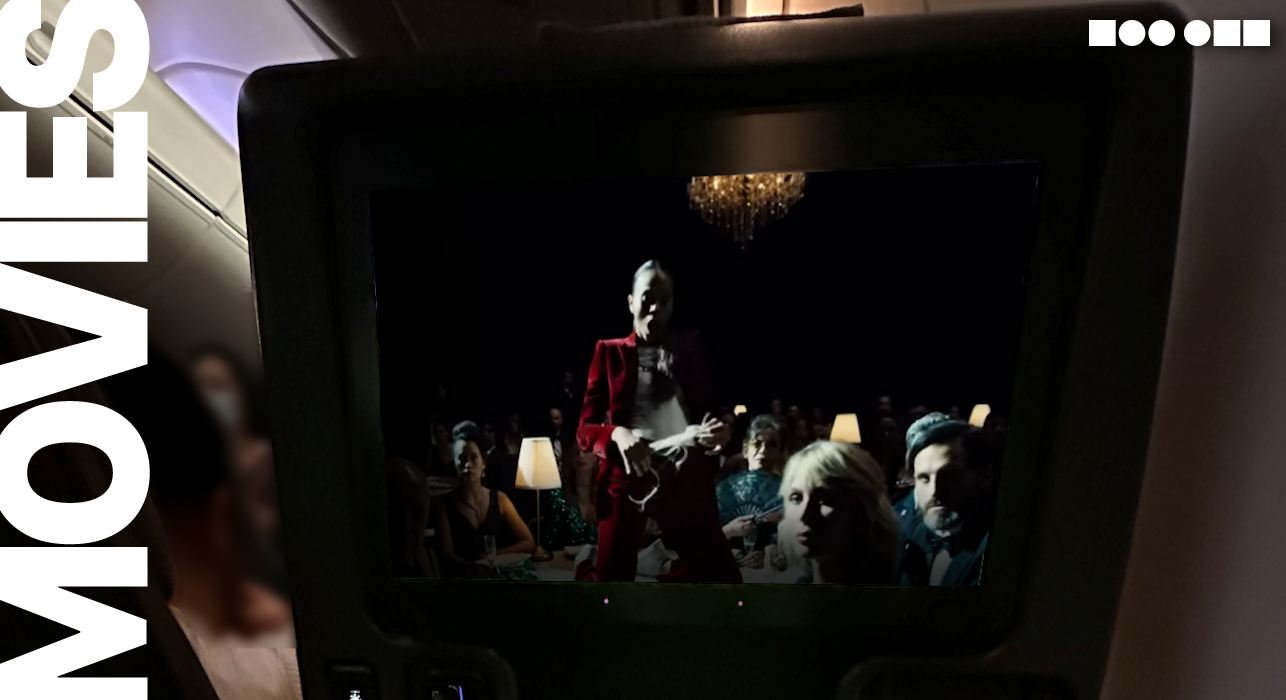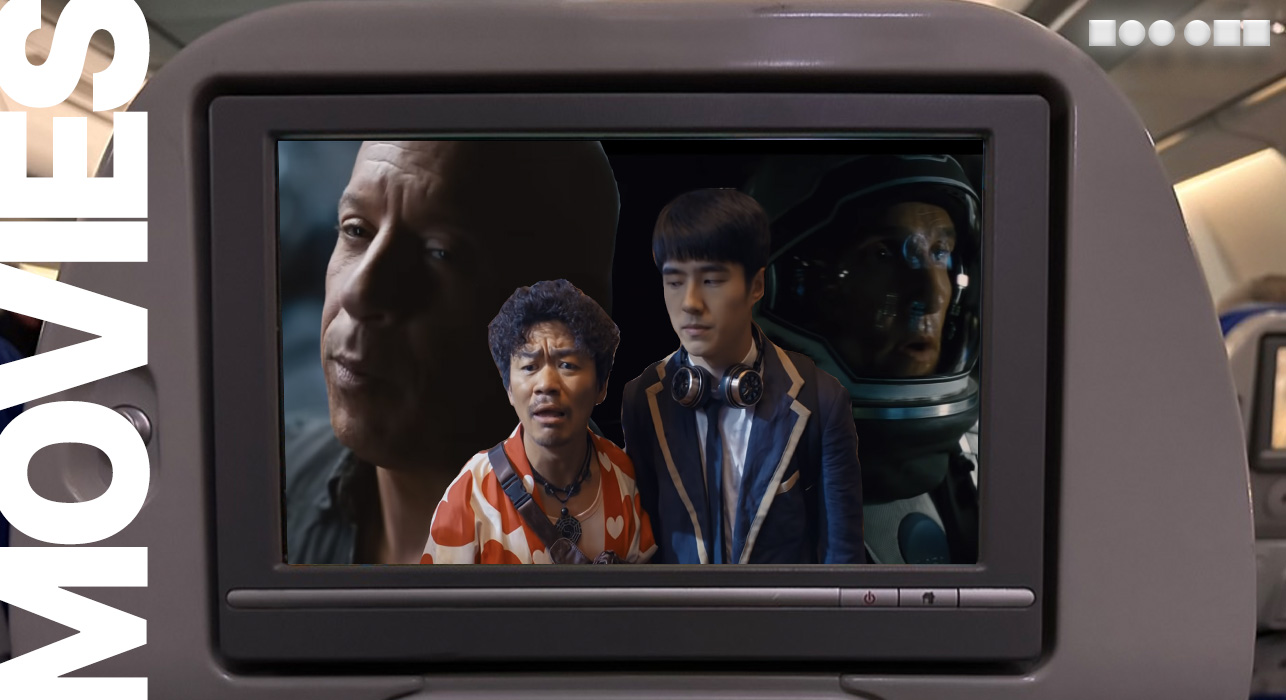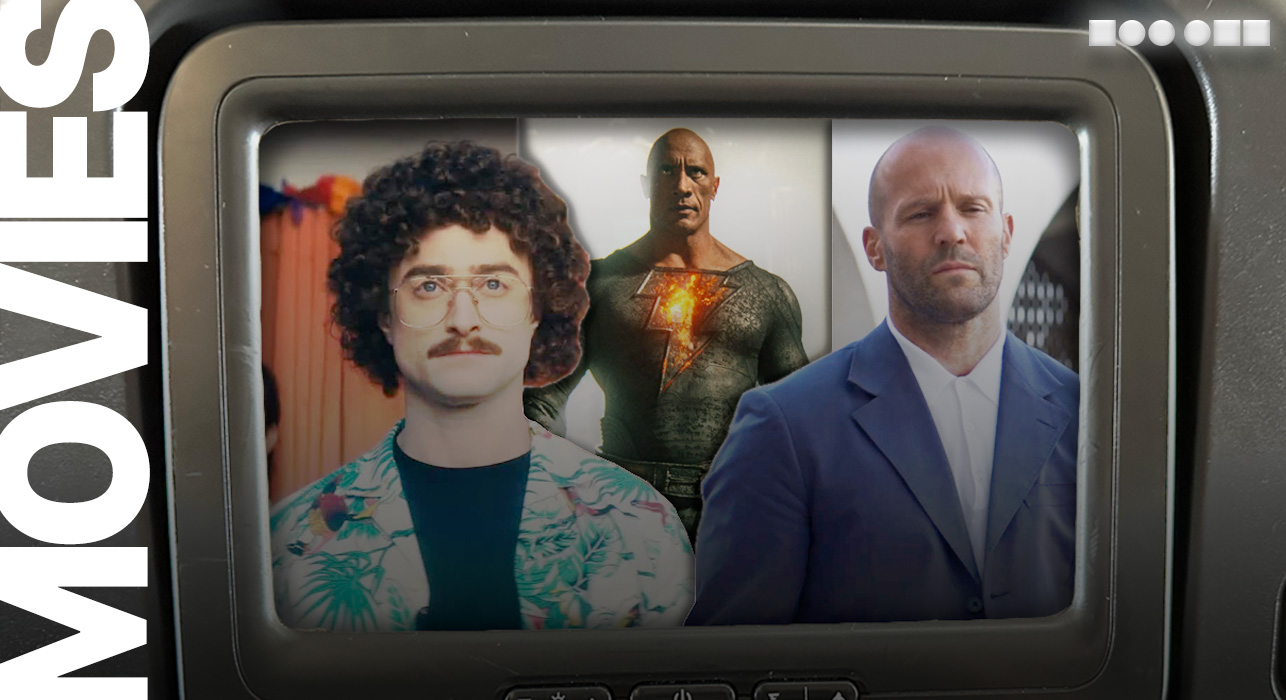What better time to catch up on some movies than on long-haul flights? That’s the premise of new occasional series Captive Audience, where I use my time in the air to generate some internet content! Yes.
For the opening edition, I took in a few flicks on a long-haul Jetstar service. Overall the selection isn’t fantastic compared to even the domestic streaming services offered by Qantas or Virgin Australia, but the movies are at least recent and there is quite a variety of genres represented. Or, if you’re a masochist, The Boss Baby is there as well.
As with a number of low-cost carriers, Jetstar’s inflight entertainment isn’t included in the base fare; on 787 Dreamliner flights, an all-you-can-watch pass is AUD$10, AUD$9 if you pre-book it before the flight. There’s a credit card slot under the screen if you’re willing to splash the cash in the air… or didn’t plan ahead. Headphones (pretty cheap in-ear sets) were on our seats on boarding, although I used my own headphones; you’ll need a two-prong airline adaptor to plug in your own set.
Anyway, with 7 hours to kill between Cairns and Osaka, one can probably manage three full-length flicks…

The Disaster Artist (M) (2017)
There is a sequence in this film where Tommy Wiseau (James Franco) insists that his being nude is important to the artistry of a particular sex scene in the movie he’s making, and we get an extended shot of his naked backside kind-of thrusting in the general direction of his co-star for almost a full minute. The sheer (deliberate) awkwardness of the scene doesn’t really make for pleasant viewing on an airliner- especially when you’re in the front row of the cabin and others can see your screen- but it sums up the entire production process of The Room, the story of which forms the basis of The Disaster Artist.
Tommy meets up with Greg Sestero (Dave Franco) in acting classes, and the two of them move to Hollywood to seek their fortunes. After months of no success, Wiseau opts to make his own film; and by make, we mean “write, direct, and act in”. No-one is quite sure about Tommy- where he gets his money, how he wrote the script, even where he comes from- but Greg and the crew roll with it. The end result is one of the most legendary bad films in history, making just $1,800 on a $6,000,000 budget on release, but later becoming a cult-cinema staple at midnight screenings.
The Disaster Artist is mostly sympathetic to Tommy; the mystery surrounding where he came from and who he actually was is at least addressed (if not answered) and he’s mostly seen in a good light. Well, if not ‘good’, at least in a ‘we don’t understand a single thing he’s doing but the cheques weren’t bouncing so whatever’ kind of way. James Franco’s performance as Tommy is fascinating to watch, and as bad as The Disaster Artist makes The Room look, the credits feature comparisons between Franco and the real Tommy’s performances to show that yes, the original was just that awful.
As an aside, The Room doesn’t appear to be available on DVD or streaming services in Australia, although it did get submitted for classification. (It was rated M, presumably for Tommy Wiseau’s naked backside.) The Disaster Artist has perked my interest, providing I’m willing to put in an Amazon order for the disc… and maybe drop a few extra bucks on the Rifftrax commentary.
 GoldenEye (PG) (1995)
GoldenEye (PG) (1995)
A rogue Russian general and a crime syndicate known as Janus have teamed up to take control of a weapons satellite that can destroy thousands of computers. Bond must team up with a (female, because of course) computer programmer to find and take down the group and disable the weapon. But a voice from his past will come back to haunt him…
The film ticks basically every box in the Bond formula, whilst adapting to the 1990s landscape both on-screen and off. There had been a six-year gap between Licence To Kill (the last Dalton outing) and GoldenEye, mainly due to legal wrangling over the Bond film rights. In that time the concept of political correctness had arrived (hence Bond reporting to a female M for the first time), the Soviet Union had fallen, and the Russians were kinda-sorta our friends again (although even early Bond movies tended to have him teaming up with the Soviets against rogue actors, rather than making the Ruskies out to be the baddies). Meanwhile, there were other movies trying to out-Bond Bond, such as the Jamie Lee Curtis/Arnold Schwarzenegger hit True Lies, so the stakes were high to make sure 007 was still relevant in the mid-nineties.
Okay, so this is hardly a new film, I just really like… really like James Bond films. Bond movies are basically like comfort food for me- the kind of things I can almost recite verbatim, and yet still find time to watch (or can’t make myself flick away if it happens to be on TV). And GoldenEye is the best of the Brosnan era (even if I have a soft spot for Tomorrow Never Dies); minimal reliance on gadgets, a believable villain in Sean Bean, and in Tina Turner’s theme song, probably the best opening sequence during Pierce’s run in the tuxedo.
 The Greatest Showman (PG) (2017)
The Greatest Showman (PG) (2017)
I was expecting this to either be an awesome spectacle of musical theatre, or a cringeworthy saccharine-fest, with no middle ground. It looks like its Rotten Tomatoes rating also reflects that stance; either you really love musical theatre and walk away from The Greatest Showman with “Rewrite The Stars” on a loop in your head (the audience score on Rotten Tomatoes is 88%), or you hated every minute of its run time (the critic score is only 56%). Luckily I’m the former; it has a simple story and some really memorable songs that make the film totally worthy of your consideration.
The film is a heavily-sanitised (Broadway-ified?) story of the early life of Phineas Barnum, before Barnum and Bailey’s Circus became a travelling exhibition. Barnum (Hugh Jackman) risks bankruptcy to move away from a desk job and open a museum of wonders and freak… er, unique individuals. The museum is a success and the talk of New York’s working classes, but he craves acceptance from higher society and starts to promote a visiting European opera singer (Rebecca Ferguson). But the tour takes him away from his established business, now run by partner Carlyle (Zac Efron), and from his wife (Michelle Williams) and children. Barnum has to make the decision as to whether to stay with those closest to him, or seek greater accolades with his visiting star.
It seems odd that this was always slated as a feature film; it seems designed for the stage and most of the musical numbers could easily be adapted to a live production. The songs (by Benj Pasek and Justin Paul, who wrote the songs for La La Land) are excellent, the choreography works well, and the supporting cast (led by Zendaya as a trapeze artist and Keala Settle as the bearded lady) put in fantastic vocal performances.
A character as complex as P.T. Barnum is probably not good musical-theatre fodder, and so if you’re after a serious study of one of the 19th century’s most fascinating figures this isn’t it. But if you want to hear Hugh Jackman and Zac Efron sing, this is easily worth your 105 minutes and probably deserves a better theatre setup than a 10-inch airline screen and my (admittedly cheap) noise-cancellers.




